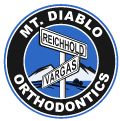[st_row id_wrapper=”elm_5c20fb6e68d7d” ][st_column span=”span12″ id_wrapper=”elm_5c20fb6e68d3c” ][st_text id_wrapper=”elm_5c20fb6e68cfa” ]As one of our orthodontic colleagues recently said, “It was bound to happen – We have become Uberized”. What he was referring to was our digital environment. “Anything and everything that can become digitized and sold directly to the consumer will happen. It’s only a matter of time”. Below is a recent press release from our national organization, the American Association of Orthodontists, on the hot topic of “Do It Yourself” Teeth Straightening:
DIY Braces is a Dangerous Trend
St. Louis, April 17, 2016 – “Do it yourself” orthodontic treatment is a dangerous new trend on social media and consumers may be putting their teeth, gums and jaws in harm’s way by trying to self-treat. In January of 2015, the American Association of Orthodontists (AAO) responded to the dozens of videos, websites, and social media posts suggesting that consumers try straightening their teeth by themselves with a widespread consumer alert. Today, the online conversation has changed, as the message against doing self-treatment is loud and clear. But doctors warn that the problem persists.
The ‘quick fix’ offerings include everything from rubber bands and dental floss promoted to close a gap between teeth, to faux-braces made out of paper clips, and retainers made from modeling clay, to name a few. Many of these have the potential to cause extensive damage to teeth, bone and soft tissue that could require expensive and extensive restoration by a multi-disciplinary team of dental specialists.
Yet despite warnings, there continue to be instances of individuals trying new ways to “do it yourself.” Amos Dudley, a digital design student at the New Jersey Institute of Technology was recently able to fabricate clear aligners using 3D printing technology. But Dudley is quick to point out in an interview in the blog OrthoPundit, “I don’t see it being a good idea unless a human verifies the results somewhere along the chain, and is involved in checking the progress of the procedure, and making course corrections.”
“I’d advise against making your own aligners,” Dudley said on Gizmodo.com. “For something as important as important as the health of the teeth,” he told OrthoPundit, “…there’s still a lot of value in the analytical eye of a professional.” Dudley also warns visitors to his blog to not try his method, which was designed as an experiment in the disruptive possibilities of 3D printing technology. He clearly notes: “Do not attempt anything written here….”
The story of Dudley’s creativity went viral, but media outlets covering the story also concurred that self-treatment is not a great idea. “A focus only on alignment and not on function or health often results in an unstable result with long-term dental health compromises,” said orthodontist Brent Larson, DDS, MS in the blog “How Stuff Works.” This could result in loss of the supporting tooth root, gum recession, or, in the worst case, loss of teeth.” A Washington Post article concludes, “DIY fixes may seem like an inexpensive alternative, but unfortunately the adage holds up: you get what you pay for.”
Dr. Larson concurs. “DIY solutions are always tempting because of the possibility of saving money. But this isn’t like home remodeling where if you get into trouble you can always call in a professional later,” he said. “With DIY orthodontics, by the time a problem is recognized, damage has likely been done that is not reversible, even with professional help. The best solution to obtain a healthy, beautiful smile is to visit an orthodontist – many will do an initial consultation at no cost – and talk about professional treatment options. Most orthodontists will have flexible options to make treatment affordable.”
One of the most serious concerns is that consumers are being told that by simply putting a special rubber band around teeth that gap, the space will close. Because of the known risks, orthodontists consider the unsupervised movement of teeth using just rubber bands to be below the standard of care, and it can result in permanent tooth loss. A photo in the September 2014 issue of The American Journal of Orthodontics and Dentofacial Orthopedics shows damage caused by a submerged elastic. The British Orthodontic Society has also recently issued an official warning against DIY orthodontics.
“We realize that cost is a concern for many families and that has likely fueled interest in ‘DIY’ orthodontics,” said Morris N. Poole, DDS, president of the American Association of Orthodontists. “To help families who truly cannot afford treatment, we have created a national organization called Donated Orthodontic Services (DOS) that helps qualified low income children receive orthodontic care at no cost. Orthodontists across the country routinely donate their time to treat children in need.”
Orthodontists are uniquely qualified specialists who diagnose, prevent and treat dental and facial irregularities to correctly align teeth and jaws. After graduating from dental school and then completing the required two-to-three years of specialized education in an accredited orthodontic residency program, orthodontists are eligible for membership in the American Association of Orthodontists (AAO). For more information or to find AAO member orthodontists in your area, please visit mylifemysmile.org.[/st_text][/st_column][/st_row][st_row id_wrapper=”elm_5c20fb6e6992b” ][st_column span=”span12″ id_wrapper=”elm_5c20fb6e698eb” ][st_text id_wrapper=”elm_5c20fb6e698a9″ ][st_text id_wrapper=”elm_5c20fb6e69867″ ][/st_text]
Press Release dated April, 17, 2016 by the American Association of Orthodontists
https://www.youtube.com/watch?v=OwFY9x22knc
[/st_text][/st_column][/st_row]











